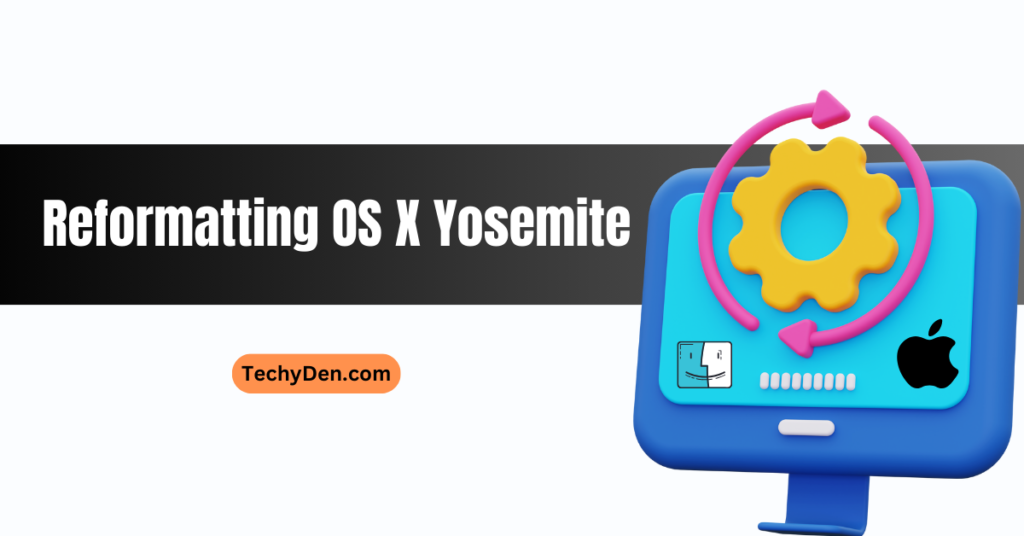With the release of OS X Yosemite, Apple brought a fresh and innovative experience to Mac users worldwide. This highly anticipated update introduced many exciting features, a refined user interface, and seamless integration with other Apple devices.
In this article, we will explore the key features of OS X Yosemite, learn how to upgrade to this new operating system, discover useful tips and tricks, and address common issues users may encounter.
What is OS X Yosemite?

OS X Yosemite is an operating system developed by Apple for its Mac computers. It was released in 2014 as the tenth major version of the OS X operating system. OS X Yosemite introduced a fresh and visually appealing user interface, along with several new features and improvements.
The name “Yosemite” comes from the famous Yosemite National Park in California, known for its stunning natural beauty. Apple often names its operating systems after iconic locations in California.
With OS X Yosemite, Apple aimed to bring a greater level of continuity and integration between Mac computers and iOS devices, such as iPhones and iPads. The operating system featured a redesigned user interface inspired by iOS, with flatter and more modern design elements.
OS X Yosemite also introduced iCloud Drive, a cloud storage service that allowed users to store their files and access them across multiple Apple devices. The operating system brought enhancements to various apps, including Safari, Mail, and Messages, along with improvements to system performance, security, and privacy.
Features of OS X Yosemite
1. Redesigned User Interface

- One of the most noticeable changes in OS X Yosemite is its visually stunning user interface.
- Inspired by the aesthetics of iOS, Yosemite introduces a flatter and more modern design language with translucent windows, animated icons, and a refreshed dock.
- The new interface creates a unified experience across all Apple devices, making switching between your Mac, iPhone, and iPad easier than ever.
2. Continuity and Handoff
- Continuity and Handoff are game-changing features that bridge the gap between your Mac and iOS devices.
- With Handoff, you can seamlessly transition your work from one device to another.
- Start composing an email on your iPhone and effortlessly continue where you left off on your Mac.
- You can even answer calls and send SMS messages directly from your Mac if your iPhone is nearby.
3. iCloud Drive

- iCloud Drive revolutionizes the way you store and access your files.
- It allows for storing documents, presentations, and other files in iCloud, making them available on all your Apple devices.
- With iCloud Drive, you can organize your files in a hierarchical structure and access them from the Finder.
- It simplifies collaboration by allowing you to share files with others and work on them simultaneously.
4. Notification Center Enhancements
- The Notification Center in OS X Yosemite has undergone significant improvements.
- Now you can view your notifications in a unified interface with a new Today view that provides widgets for quick access to information such as weather, calendar events, and reminders.
- Interactive notifications allow you to respond to messages, emails, and calendar invites without leaving the app you’re currently using.
5. Spotlight Improvements
- Spotlight, the powerful search tool in OS X, has received a major overhaul in Yosemite. It now provides more than just search results.
- With Spotlight, you can get instant answers to questions, perform calculations, find movie showtimes, and even check the weather.
- The enhanced search capabilities make it easier and faster to find what you’re looking for, whether it’s on your Mac or the web.
6. Safari Updates
- Safari, the default web browser on Mac, has been enhanced with exciting new features in OS X Yosemite.
- The streamlined design offers a more immersive browsing experience focusing on content.
- Safari now includes a smarter address bar displaying suggestions and more relevant search results.
- The new Tab View makes navigating through your open tabs effortless, and the enhanced performance ensures faster browsing.
7. Mail and Messages Enhancements
- The Mail and Messages apps have received notable improvements in Yosemite.
- Mail introduces Markup, which allows you to annotate images and PDFs directly within your emails.
- Messages now support audio and video, making conversations more engaging and dynamic.
- You can also send and receive SMS messages from non-Apple devices directly on your Mac.
8. Improved Security and Privacy
- OS X Yosemite focuses on enhancing security and privacy. It introduces iCloud Keychain, a feature that securely stores your passwords, credit card information, and Wi-Fi network credentials.
- The operating system also provides improved data encryption and proactive measures to protect against malicious software.
9. Family Sharing
- Family Sharing is a fantastic feature for households with multiple Apple devices.
- With Family Sharing, you can easily share App Store, iTunes Store, and iBooks Store purchases with up to six family members.
- It also enables shared photo albums, family calendars, and even location tracking for added peace of mind.
10. Markup and Mail Drop
- Markup and Mail Drop are two convenient additions to OS X Yosemite.
- Markup lets you annotate images and PDFs not only in Mail but also in other applications.
- Mail Drop allows you to send large attachments through email without worrying about file size limitations.
- Your attachments are uploaded to iCloud and seamlessly delivered to the recipient, ensuring a smooth sharing experience.
Compatibility and System Requirements
Before upgrading to OS X Yosemite, ensuring your Mac meets the system requirements is important.
- Yosemite is compatible with various Macs, but older models may not support all the features.
- Check Apple’s official website for a detailed list of compatible devices and system requirements.
General Requirements
- OS X v10.6.8 or later
- 2GB of memory
- 8GB of available storage
Feature Requirements
Handoff and Instant Hotspot Supported by the following Mac models:
- MacBook Air (2012 or newer)
- MacBook Pro (2012 or newer)
- iMac (2012 or newer)
- Mac mini (2012 or newer)
- Mac Pro (Late 2013)
How to Upgrade to OS X Yosemite
Upgrading to OS X Yosemite is a straightforward process. The easiest way is to navigate the Mac App Store and search for “OS X Yosemite.” Click on the download button, and the installation process will begin. Back up your important files before upgrading to avoid any data loss.
Tips and Tricks for Using OS X Yosemite
Once you have upgraded to OS X Yosemite, explore some tips and tricks to maximize your productivity and enhance your user experience.
a. Navigating the Interface
Familiarize yourself with the new design elements, such as the translucent windows, and take advantage of gestures for navigating between apps and spaces.
b. Customizing Your Mac
Personalize your Mac by changing the desktop background, adjusting the accent colors, and customizing the Notification Center widgets to suit your preferences.
c. Using Spotlight
Discover the full potential of Spotlight by using it as a calculator, unit converter, and dictionary. You can also search for specific files or launch apps directly from Spotlight.
d. Enhancing Productivity with Mission Control and Spaces
Take advantage of Mission Control to quickly switch between open apps and create separate spaces for different tasks. It helps declutter your screen and improves focus.
e. Managing Notifications
Customize your notification preferences to receive only the alerts that matter to you. You can control which apps can send notifications and choose between banners, alerts, or no notifications at all.
Common Issues and Troubleshooting
While OS X Yosemite brings many new features and improvements, users may encounter some issues during installation or everyday usage.
Here are some common problems and troubleshooting steps:
a. Installation Problems:
If you experience issues during installation, ensure your Mac meets the system requirements and check your internet connection. Restarting your Mac or trying a different network can help resolve installation problems.
b. Application Compatibility
Some older applications may need to be fully compatible with OS X Yosemite. Check the developers’ websites for updates or alternative apps optimized for Yosemite.
c. Wi-Fi and Networking Issues
If you experience Wi-Fi or networking problems, try resetting your network settings, restarting your router, or updating your network drivers. You can also contact your internet service provider for assistance.
d. Performance and Stability Problems
If your Mac becomes sluggish or unresponsive after upgrading to Yosemite, try clearing system caches, repairing disk permissions, and closing unnecessary apps or processes. If the issue persists, consider upgrading your hardware or consulting Apple support.
Frequently Asked Questions (FAQs)
Can I downgrade to a previous version of OS X after upgrading to Yosemite?
Yes, it’s possible to downgrade to a previous version if you encounter compatibility or stability issues. However, backing up your important files and performing a clean installation is recommended.
Will all my apps and files be compatible with Yosemite?
Most apps and files should work without issues, but checking with the developers for compatibility updates is always a good idea. Make sure to back up your files before upgrading.
Can I use Handoff and Continuity with non-Apple devices?
Handoff and Continuity features are exclusive to Apple devices and require compatible hardware and software. They won’t work with non-Apple devices.
Can I use iCloud Drive on Windows or Android devices?
iCloud Drive is primarily designed for Apple devices and is seamlessly integrated into the macOS and iOS ecosystems. However, you can access your iCloud Drive files through iCloud.com on a web browser on any platform.
How often does Apple release major updates to macOS?
Apple typically releases a major macOS update annually, introducing new features, performance enhancements, and security improvements. It’s recommended to stay updated to benefit from the latest advancements.
Conclusion
OS X Yosemite represents a significant milestone in the evolution of the Mac operating system.
With its redesigned interface, seamless integration with iOS devices, and many new features, Yosemite offers a more cohesive and enjoyable user experience.
You can make the most of this powerful operating system by following the upgrade process, exploring the tips and tricks, and troubleshooting common issues.





